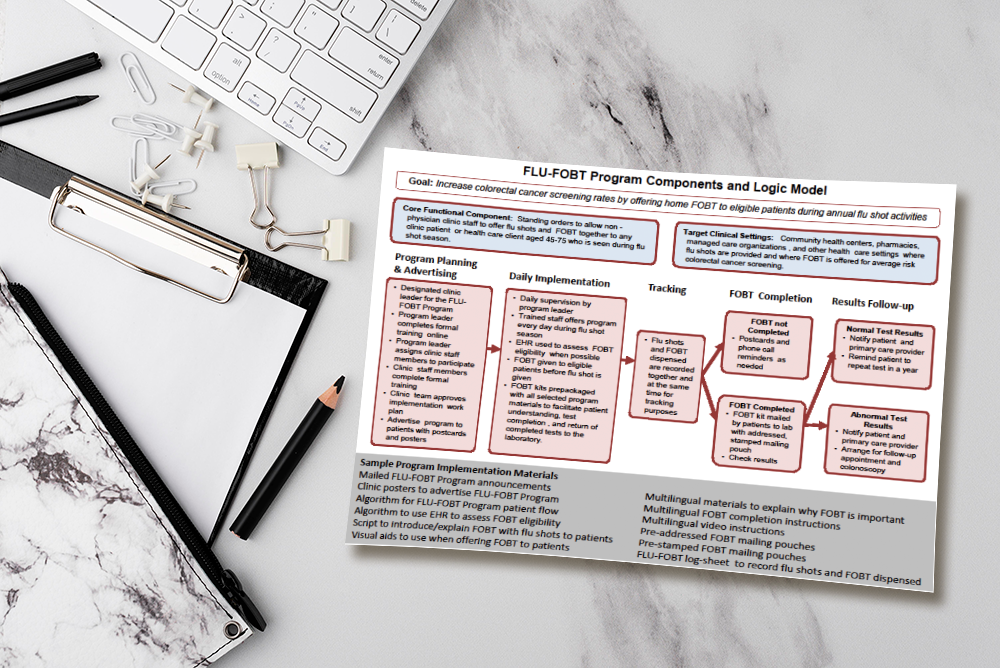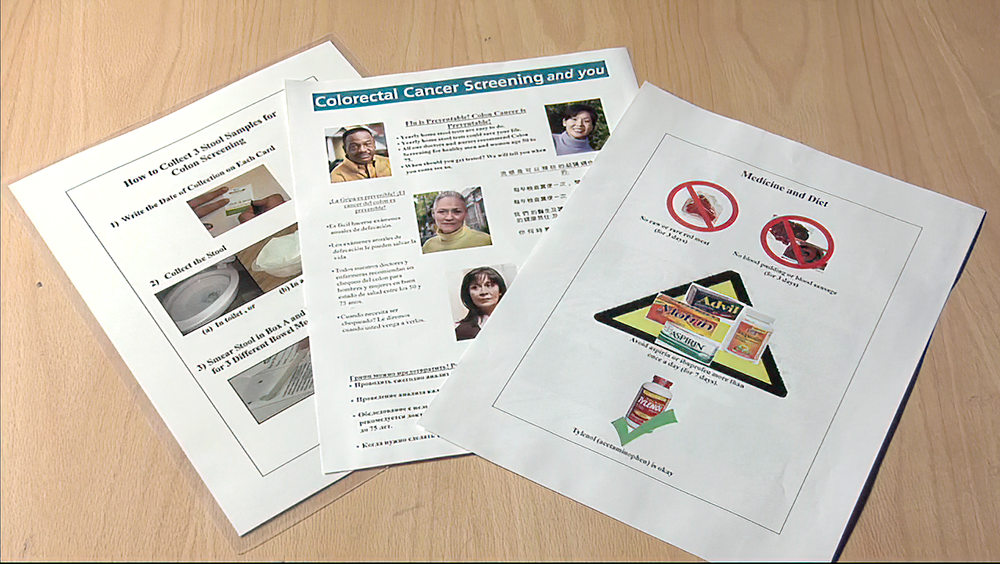PROGRAM MATERIALS
Find information to implement yourFIT or FLU-FOBT Program
Below you will find information and program materials can help you implement your FLU-FIT or FLU-FOBT Program. Downloadable materials are provided in an editable format so you can customize them for your clinical setting.
Click the button below to download Program Components and Flow Diagram






http://www.cdc.gov/flu/index.htm
USPSTF Colorectal Cancer Screening Guidelines: 2021 US Preventive Services Task Force Colorectal Cancer Screening Guidelines: https://www.uspreventiveservicestaskforce.org/uspstf/recommendation/colorectal-cancer-screening
Tools to Determine Who Needs FIT or FOBT: In general, patients aged 45-75 with no FIT or FOBT in the last year and no colonoscopy in the last ten years are eligible for FIT or FOBT. Patients with flexible sigmoidoscopy in the last five years are eligible for FIT or FOBT. Here is an algorithm for staff to use when providing FIT or FOBT to patients.
Colorectal Cancer Screening and FIT/FOBT: Facts and Talking Points for Staff to Use with Patients: You can provide staff with a fact sheet such as this one so they will feel comfortable with their knowledge and ability to talk to patients about colorectal cancer screening and FIT/FOBT.
Patient Instructions for FIT and FOBT: Test instructions may be downloaded from the manufacturer’s website. However, in some cases, these instructions may not be available in the patient’s primary language or may not match the patient’s literacy level. We present some examples of materials for some commonly used types of FIT and FOBT that you may choose to use or edit for your patient population:
![]()
FIT – OC Chek Brand Instructions:
Download OC Chek Wordless Instructions Developed by the San Francisco Cancer Initiative
Sample Postcard Reminder Postcard reminders can encourage patients to complete FIT/FOBT kits they are given. We have provided a postcard file that you may download, modify and print in double-sided format to be sent to patients. Download Postcard Reminder Word Doc



